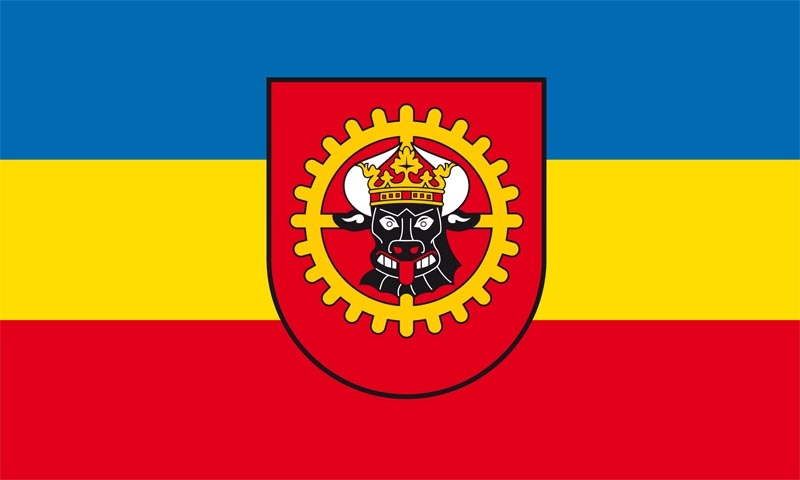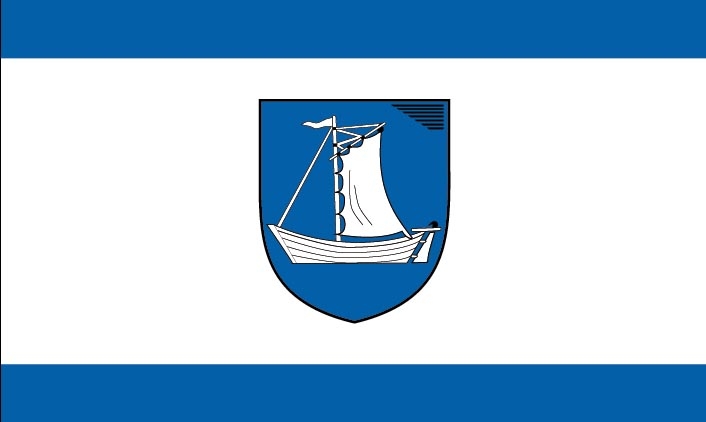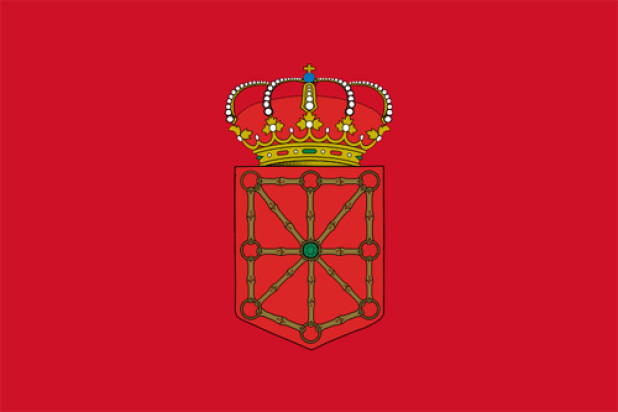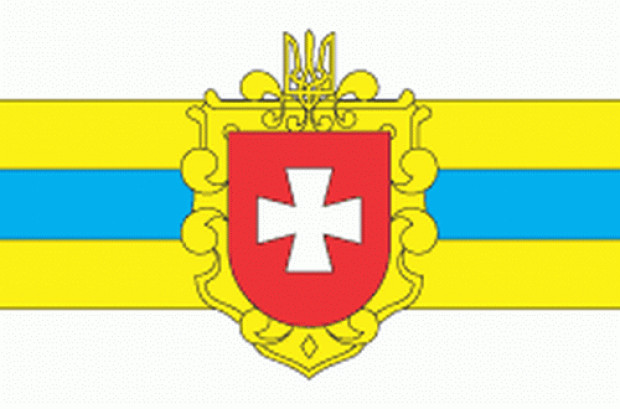Flag of Greece
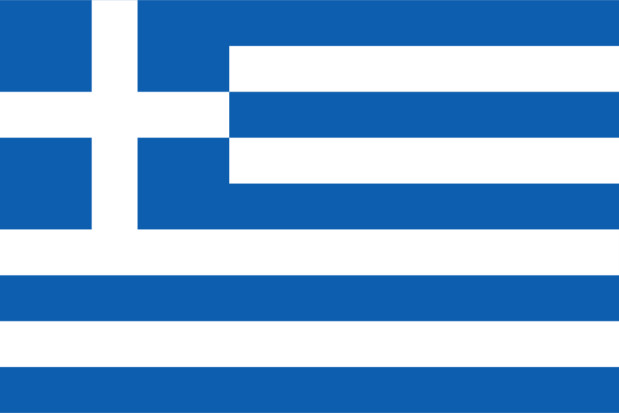
Listen to anthem
Top sellers from our flag shop
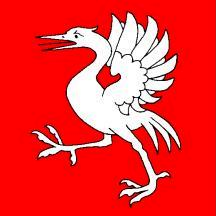
Greyerz (Bezirk) Flagge 120x120 cm
9,90 €
Show in shop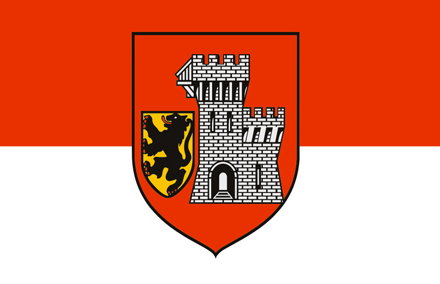
Grevenbroich Flagge 90x150 cm Premiumqualität
39,00 €
Show in shopBackground knowledge
The current flag of Greece stood at the history of modern Greece in constant competition with a simple blue flag with a white cross. Only in 1978 sat today's design by the only national flag in the country.
color and meaning of the Greek flag
The national flag consists of nine equally wide horizontal stripes in blue and white. In the left upper canton is a white cross on a blue is, a square base. The side of the square corresponds to the width of five horizontal stripes, white cross that has the width of this strip.
The blue and white colors can be up in the Byzantine Empire traced. The blue varied very often. During the time of King Otto I Mittelblau modeled after the crest of the Bavarian Wittelsbach was used. The Greek military junta from 1967 to 1974 used a very dark blue. The current flag is a light blue law mentioned. In most cases, we can see that the flag in an ultramarine blue, so also on the website of the Greek President.
The flag should represent "the wisdom of God, freedom and the country." The blue represents the sea and sky, white for the purity of the struggle for independence. The cross represents the Christian tradition of Greece, which is maintained primarily by the Orthodox Church. The nine stripes correspond to the nine syllables of the choice award of the Greek War of Independence: Ε-λευ-θε-ρί-α ή Θά-να-τος (E-lef-the-ri-a i Tha-na-tos, German Freedom or Death). Another explanation is that the Greek word for freedom (Ελευθερία) has nine letters. A third interpretation is that the four white stripes to the four directions and the five blue stripes correspond to the five parts of the Mediterranean seas that border the area, which in Greece on behalf of the Megali Idea 19th Century sought.
history of the Greek flag
With the Greek Revolution from 1821 to 1829 were freed the Peloponnese, Attica and the rest of Central Greece from Ottoman rule. During the struggle for independence from the Ottomans used the supporters of the family of Kolokotronis and Cypriot fighters Hadjigeorgios a blue cross on a white ground. Maybe it has already been used by the revolutionaries under Mellissinos Makarios of the 1769th The Greek guerrilla used at this time a horizontal yellow-blue-white tricolor with a white cross in the blue stripes in a laurel wreath. On 21 March 1821 began Andreas Londos, a red flag with a black, over a Latin cross with the tops turned down white crescent. The back of the flag was just red.
In January 1822 blue and white were adopted as national colors. On 27 March. (According to the Julian calendar on March 15) The flag, which is now the single national flag, served first as war maritime flag. As a war flag to land a white cross on a blue background was used, for merchant ships a blue flag was used in the Canton had a white rectangle with a blue cross .
Between 1828 and 1970 it was determined that the flag is used with the strips outside Greece and the Cross flag only domestically. The old merchant flag was abolished, civil ships used instead now the striped flag.
The Kingdom of Greece was a crown in the war and the state flag. Among the Wittelsbach kings and the Wittelsbach arms was used.
From the 18th August 1970 because of the importance of maritime Greece for the striped flag is the only national flag in the country. She had an aspect ratio of 7:12. Between June 1975 and December 1978, the cross flag for single flag, then it was again officially the striped flag. Nevertheless, the cross flag is still used by the Greek army during parades and as a symbol on their vehicles.
Hymn
I recognize you by the sharpness
of your sword, the terrible one,
I know thee by the look
that measures the earth with power.
From the holy bones
of the Hellenes
And, as once, now grown strong,
Freedom, freedom, be greeted!
Locked there in the grave,
Intimidated and saddened,
you waited for the voice
to say, "Come back!"
That day was long in coming,
everything was dead silent,
everything was darkened by fear,
bondage covered everything.
Unhappy, only consolation remained
you the memory of the greatness
of the greatness long gone, which you
you weep.
Breathless waiting, bored waiting
for a free word,
one hand beating the other
In despair evermore.
And you said, "When will I raise my head
my head from this misery?"
Lamentations answered from above,
Chains, wailing.
Then you raised your eyes,
which were dimmed by weeping,
blood dripping on your clothes,
much blood of Greekism.
With the bloody garments
you secretly stole away,
to seek in a foreign land
other hands full of strength.
Alone you went your way,
Lonely you returned,
The doors of strangers are not easy..,
When need knocks at them.
Backwards you turn your steps,
Soon you'll step with your foot
That rock, that lawn,
That reminds you of the glory.
Humbly bending to the ground
The sorrow-stricken head,
like the poor man who begs,
To whom life is a burden.
But now every child of yours
every child of yours with strength,
And in restless effort
Strives for victory or death.
From the sacred bones
of the Hellenes resurrected,
And, as once, now grown strong,
Freedom, freedom, be greeted!
That's what ChatGPT knows about the flag of Greece
-
The national flag of Greece was introduced in 1978. It consists of a white cross on a blue background, also known as the Greek cross. The cross symbolizes the Christian faith and the blue color represents the Greek soul and the color of the sky.
-
The Greek national flag was designed in 1822 during the Greek Revolution. It consists of blue and white stripes and a white cross on a blue background. The cross symbolizes religion and the blue and white stripes represent the souls of the heroes who fought for Greek independence. The flag has been a symbol of Greek identity and independence ever since.
-
The national flag of Greece consists of a white cross on a blue background. The white cross represents Greek Orthodoxy and the blue represents the sky and the sea. The four ends of the cross are a light shade of blue, reminiscent of the colors of the Greek flag.
Discover something new
Random flags from our large flag database.
